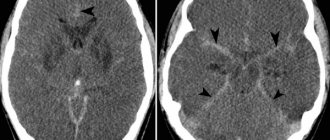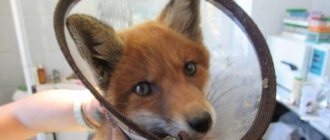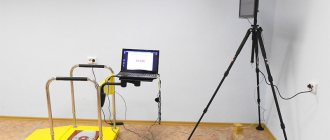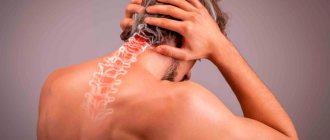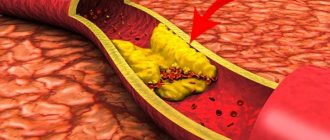Facial pain or prosopalgia is a serious symptom that accompanies many diseases. Concomitant symptoms play a role in the diagnosis of pathology. To treat facial pain, the exact cause must be determined. Uncontrolled use of medications, in particular painkillers, blurs the picture of the disease and aggravates its course.
Treatment for facial pain may include addressing TMJ dysfunction. The fact that the symptom is not localized specifically in the articulation area does not exclude the diagnosis of dysfunction. Pain impulses from facial structures are transmitted to a small part of the brain. Pain centers are located nearby and can provoke each other. Therefore, pain in the ear, jaw, and chewing muscles may actually be the cause of TMJ pathology. And at the same time, pain in the TMJ does not always indicate its defeat.
Some information about the disease
Due to the fact that the facial part has a complex anatomical organization, pain in this area can appear for various reasons. It will be a little difficult to define. There may be damage to the facial or dental nerve or something else. In any case, only a specialist with examinations and tests can answer the question of why left-sided prosopalgia formed. Treatment of this disease is very difficult and long-term. As a rule, patients with this diagnosis turn to such specialists as an otolaryngologist, a neurologist and a therapist.
Clinical features
Facial pain of various origins differs in its clinical features regarding the nature, duration, paroxysmalness, and vegetative coloring of the pain syndrome. These distinctive features, as well as accompanying symptoms (if any), enable the neurologist to determine the type of prosopalgia, which is fundamental in the diagnosis and subsequent treatment of facial pain.
The permanent (constant) type of pain syndrome is more typical for myogenic, psychogenic and symptomatic prosopalgia. It may occur with episodes of increasing and decreasing pain. Paroxysmal pain phenomenon with intense painful attacks of variable duration against the background of complete or almost complete absence of pain in the interictal period is typical for neurogenic and vascular prosopalgia. A distinctive feature of the latter is the presence of a pronounced vegetative component - during paroxysm, swelling, lacrimation, hyperemia of the skin area, rhinorrhea, nasal congestion, redness of the conjunctiva, etc. are observed.
Bilateral in nature, as a rule, is symptomatic, myogenic and psychogenic prosopalgia. Moreover, the latter may be distinguished by the asymmetry of the pain phenomenon in the halves of the face. Vascular, neurogenic and atypical facial pain is usually unilateral.
Irradiation of pain is more typical with neurogenic and vascular prosopalgia, but can also be observed with facial pain of symptomatic origin. In addition, symptomatic prosopalgia is often reflexive in nature. The most illustrative example is odontogenic prosopalgia, caused by the occurrence of pain in the Zakharyin-Ged zones: mandibular, nasolabial, maxillary, frontonasal, temporal, sublingual, mental, laryngeal. Each zone is a reflection of the pathology of certain teeth, while toothache may be absent.
Left-sided prosopalgia: causes of the disease
This disease appears due to a number of factors, of which there are a large number.
When the jaw and teeth are damaged, odontogenic pain occurs. Unpleasant sensations are transferred to the face. The causes of this disease are most often caries, damage to the pulp or dental nerve. In the presence of such symptoms, the pain is pulsating in the jaw area. If you drink cold water or hot tea, the discomfort becomes stronger. To diagnose and treat left-sided facial prosopalgia, you will need to consult a dentist.
Another common type of this disease is Slader syndrome. With it, pain occurs in the area of the eyes, tongue and ears. Moreover, these unpleasant sensations can radiate to the neck and shoulder blades.
Carotidynia is characterized by pain in the face due to inflammation of the carotid arteries. With such left-sided prosopalgia, unpleasant sensations occur in the area of the neck and teeth. Typically, a person suffers from this disease for several hours. It becomes especially unpleasant at the moment when someone touches the carotid arteries.
Treatment of pathology
Both conservative and surgical measures are used to treat facial pain In chronic pathology, medications may not bring the desired effect, but surgical intervention is not used without trial therapy.
Treatment of pathology includes:
- Elimination of dental problems;
- Stress relief;
- Taking muscle relaxants;
- Botulinum toxin injections for chronic inflammation of the nerve plexuses;
- Acupuncture (acupuncture);
- Surgeries on the TMJ and salivary gland.
Treatment of pathology must be comprehensive. Often, to get rid of the disease it is necessary to take therapy for several months. As for surgical treatment, today minimally invasive interventions are used that do not require long-term rehabilitation and do not leave scars.
What is Charlen syndrome?
With this disease, the main pain is localized in the nose and inner corners of the eye. On top of everything else, conjunctivitis and runny nose are added to it. Unpleasant sensations also occur in the face, temples and forehead. In this case, joint movements are limited, a peculiar crunch appears, and chewing functions are disrupted when eating any food.
When the trigeminal nerve is damaged, very strong unpleasant sensations are observed in the facial area. When taking antispasmodic or analgesic medications, the pain does not disappear. Immediate assistance from a specialist is required.
Other reasons for the development of left-sided facial prosopalgia are migraine or otitis media.
Treatment and prognosis
Therapy based on taking painkillers acts solely on the symptoms of the disease, without eliminating the root cause. At the Center for Clinical Posturology, the problem of atypical facial pain is solved through the prism of a holistic perception of all body systems. Therapeutic tactics are chosen after a thorough functional diagnosis of the postural system, because the source of pain can be “masked” in a completely different region of the body.
Treatment, in addition to pharmacotherapy, includes:
- craniosacral therapy to normalize the flow of cerebrospinal fluid;
- physiotherapy (laser therapy, magnetic therapy);
- manual therapy, acupressure;
- reflexology and hirudotherapy;
- muscle relaxation of the maxillofacial area;
- neuromuscular dentistry;
- psychotherapy with mental state stabilization.
A posturologist “tunes” the body’s internal rhythms to a single wave, helping its systems work in a coordinated manner. The result of complex treatment is relief of the condition even with recurrent facial pain, and positive changes are noted in several directions: anxiety goes away, the patient stops fixating on unpleasant sensations, the emotional state is leveled, which significantly improves the quality of life and makes social adaptation easier.
Jaw hurts | Headache | Prosopalgia
What is otalgia?
This phenomenon characterizes itself as ear pain. Unpleasant sensations are localized not only here, but also in parts of the face. A fairly large number of diseases can have such symptoms. You should consult a specialist and undergo an examination. Possible nasopharyngeal tumor or venous sinus thrombosis. Also, one should not exclude the possibility that it is most likely just a migraine. One of the possible diseases with this symptomatology is idiopathic otalgia. It is characterized by the fact that ear pain occurs due to unknown reasons.
There is also red ear syndrome. With this disease, the discomfort is very painful and radiates to the jaw and back of the head. The blood vessels dilate and the skin takes on a reddish tint. And the temperature in the auricle becomes significantly higher.
Odontogenic pain
One of the most frequently identified causes of facial pain is damage to the dental system (odontogenic pain). The upper or lower jaw often hurts if: · due to caries, irritation of the nerve endings occurs; · tooth pulp is inflamed; A periodontal abscess is observed. “In these cases, the pain is pulsating, increases at night and is localized in the area where the root of the affected tooth is located.
Provoking factors include heat, cold, sweet food or drink. The reaction to cold is constant - in contrast to pain due to neuralgia, when cold plays the role of an irritant only at first,” notes the neurologist. Also, a situation where the face hurts, of a chronic nature, can be caused by jaw osteomyelitis, accompanied by multiple microabscesses;
Pathology of the dental system is one of the most common causes of prosopalgia. Unpleasant sensations in the upper or lower jaw are accompanied by:
- caries (due to irritation of nerve endings);
- pulpitis;
- periodontitis;
- abscesses.
In addition, odontogenic pain can be caused by trigeminal neuropathy after tooth extraction or other dental procedures. In this case, prosopalgia is accompanied by weakness of the masticatory muscles and decreased sensitivity of the lower lip.
Characteristics of atypical prosopalgia
This disease is also characterized by pain in the face and neck. Only the reason for their occurrence is not entirely clear and known. The disease usually develops in women in old age. This usually includes pain of a vegetative-vascular nature. In the case when the patient suffers from atypical prosopalgia, unpleasant sensations always follow him in the face and move to the neck. The pain affects one side. If it is bilateral, then it is characterized by asymmetry.
This disease also includes glossalgia, in which pain is observed in the tongue area. At the moment of an emotional outburst during the day, unpleasant sensations increase or, conversely, decrease. As a rule, it is very difficult for patients to describe the nature of the pain.
Causes of prosopalgia
An inflammatory reaction can act as an etiofactor of facial pain. Most often, prosopalgia of inflammatory origin occurs with sinusitis. It can be observed in otitis media, ophthalmological diseases (iridocyclitis, uveitis, conjunctivitis, keratitis, corneal ulcer), TMJ arthritis, and have an odontogenic etiology (pulpitis, periodontitis). Prosopalgia can occur with inflammatory lesions of the vessels of the facial area, for example, with Horton's disease. Often, neurogenic prosopalgia has an inflammatory etiology with neuralgia of the glossopharyngeal nerve, trigeminal nerve, Oppenheim syndrome, ganglionitis of the pterygopalatine ganglion, ganglioneuritis of the geniculate ganglion.
On the other hand, neurogenic prosopalgia may have a compression genesis, i.e., arise as a result of compression of nerve trunks or nodes due to changes in the relative position of the anatomical structures of the facial area, narrowing of bone and intermuscular nerve canals, development of tumor formations, etc. Compression etiology may have vascular prosopalgia, for example, carotidynia due to compression of the carotid artery.
The reflex mechanism of pain syndrome is often realized in odontogenic and neurogenic facial pain. The cause of prosopalgia in such cases is pathological reflex impulses coming from chronic infectious foci. An example is neuralgia of the ear ganglion. Myogenic prosopalgia of reflex genesis occurs with myofascial syndromes in the neck and shoulder girdle. Other causes of myogenic prosopalgia may include TMJ dysfunction (Costen syndrome), bruxism, and myofascial syndrome in the masticatory muscles.
Prosopalgia of psychogenic origin often occurs in suspicious, emotionally labile people against the background of overwork, chronic psycho-emotional discomfort, or as a result of an acute stressful situation. Often, psychogenic prosopalgia is observed in persons with hysterical neurosis, neurasthenia, and depressive neurosis. It can occur as part of psychiatric diseases such as schizophrenia, psychopathy, manic-depressive psychosis.
In some cases, prosopalgia is iatrogenic. Thus, Oppenheim syndrome can occur after ophthalmological operations; tooth extraction and other dental interventions can trigger the development of dental plexalgia or atypical odontalgia. One of the causes of neurogenic facial pain is damage to nerve structures during operations in the facial area. In addition, a number of facial pains do not have a clearly established etiology. For example, cluster headache, atypical prosopalgia, chronic paroxysmal hemicrania.
What are the classifications of pain syndromes?
According to the mechanism of development, somatogenic, psychogenic, vegetative and neurogenic unpleasant sensations are distinguished. The first type is associated with the impact on the human body of damaging factors during injury. For example, pain when internal organs are damaged. Neurogenic syndrome appears due to damage to the structures of the central nervous system.
Vegetalgia occurs with pathologies of internal organs. Psychogenic pain refers to those unpleasant sensations that usually occur after strong emotional experiences or depression. In this case, the patient relies on his condition and describes the situation as he sees it at the moment.
Classification of prosopalgia
Facial pain is classified primarily by mechanism of development. Prosopalgia is distinguished:
- vascular
- neurogenic
- myogenic
- psychogenic
- symptomatic
- atypical
- painful ophthalmoplegia
Vascular facial pain
includes:
- bundle cephalalgia
- paroxysmal hemicrania
- Horton's disease
- idiopathic sudden cephalalgia (ISH)
- SUNCT syndrome.
Neurogenic prosopalgia
includes:
- trigeminal neuralgia
- neuralgia of the glossopharyngeal nerve
- ganglionitis and ganglioneuritis of the nerve ganglia of the facial region.
Symptomatic facial pain
. Depending on the etiology, symptomatic prosopalgia is divided into
- ophthalmogenic
- odontogenic
- otorhinogenic
- viscerogenic.
To atypical
include pain that does not fit into the clinical picture of any of the types of prosopalgia specified in the classification. They are often caused by a combination of several pathogenetic mechanisms and have a psychogenic component.
Left-sided prosopalgia: symptoms of the disease
One of the most distinctive signs of this disease is very strong pain in the facial area. They can be different in character. Some people have paroxysmal or aching discomfort, while another patient has acute ones. It all depends on the cause of left-sided prosopalgia. It also happens that the pain increases when swallowing chewed food or pressing on the jaw or teeth.
In addition to unpleasant sensations in the facial area, other symptoms appear that also relate to this disease:
- severe increase in body temperature;
- lack of desire to eat;
- nasal congestion;
- an increase in the size of the lymph nodes;
- disturbance of restful sleep due to severe pain;
- redness of the skin and the appearance of a rash on it;
- typical facial asymmetry;
- periodic tinnitus;
- fatigue and weakness;
- increased lacrimation;
- the appearance of a nervous tic.
Preventive measures
It is much easier to prevent facial pain from occurring than to deal with it later. For this purpose, prevention is carried out, which will help not only maintain well-being, but also prevent the occurrence of negative symptoms. A person is advised to adhere to specific medical recommendations to reduce the likelihood of left-sided prosopalgia.
First of all, you will need to undergo annual preventive examinations so that abnormalities in the body can be detected in time. In this case, they will be able to be cured in time and prevented from progressing. It is imperative to strengthen the immune system, then you will be much less likely to encounter infectious and inflammatory diseases. They quite often lead to the appearance of pathology.
It is worth avoiding hypothermia if possible, because in such a situation prosopalgia may develop. If an ear or toothache appears, then you need to start treatment on time, and not wait until the condition worsens significantly and the pain syndrome spreads to the face. The longer a person puts off visiting the doctor, the worse his health will become. The disease will gradually progress and cause new negative symptoms.
As soon as unpleasant sensations appear in the face, it is recommended to consult a specialist. After examination, he will be able to clearly say what exactly the person had to face. Once the diagnosis is correct, the person can begin effective therapy. It will allow you to quickly get rid of negative symptoms and generally improve your well-being.
How is the disease diagnosed?
This process is very long. It includes several stages. To begin with, the specialist collects all the information and analyzes the person’s diseases. After this, the doctor asks about what worries the patient and finds out the causes of the listed symptoms. If necessary, the therapist then gives a referral to such specialized specialists as an otolaryngologist, a neurologist and a dentist. It should be noted that this procedure is not always mandatory.
Then you will need to undergo an x-ray examination. Thanks to him, it will be possible to find out the nature of the unpleasant sensations.
A general blood test is also a mandatory procedure. From its results we can tell whether there is inflammation or not.
Magnetic resonance imaging is prescribed if, in case of left-sided prosopalgia, diagnosis using previous methods did not give a final conclusion on the disease. Using this procedure, the source of inflammation is established, and, accordingly, you can find out the cause of the development of the disease.
They also test for the presence of inflammatory processes on the mucous membrane. Note that these methods are used only if the others did not help.
In addition to the procedures described above, the therapist and specialists can refer you to other diagnostic procedures. In this case, it is necessary to strictly adhere to the prescribed therapy and take only those medications prescribed by the doctor. You should not self-medicate. This will only make the situation worse. Remember that timely access to a medical facility guarantees recovery without complications.
Diagnosis of prosopalgia
In most cases, facial pain in itself is not a diagnosis, but rather a syndrome. In this regard, it is important to identify/exclude the underlying disease that caused prosopalgia. During diagnosis, a neurologist-algologist carefully studies the various characteristics of the pain phenomenon, palpates the facial muscles, and identifies trigger points (places of intense palpation pain). The exclusion/confirmation of the symptomatic nature of facial pain is carried out with the participation of an ophthalmologist, dentist, and otolaryngologist.
If necessary, dental x-rays, orthopantomograms, x-rays of the paranasal sinuses and the temporomandibular joint, otoscopy and pharyngoscopy, measurement of intraocular pressure, examination of eye structures, etc. are performed. In order to identify inflammatory changes, a clinical blood test is prescribed. Psychogenic and atypical prosopalgia are an indication for consultation with a psychiatrist or psychotherapist with psychological testing and pathopsychological examination.
How is the treatment carried out?
There is no single list of interventions for this disease. For left-sided prosopalgia, treatment depends on the causes of its occurrence. In addition, the specialist focuses on the nature of the unpleasant sensations and the reasons for their development.
Usually, first of all, the doctor tries to help the patient get rid of pain with an injection in the part of the face where it arose. Why injections, can't you just get by with pills? Unfortunately, in this case, such medications do not help at all.
Treatment of prosopalgia
Treatment of facial pain depends entirely on its etiology. Symptomatic prosopalgia first of all requires treatment of the underlying disease - otitis media, sinusitis, pulpitis, etc. With inflammatory genesis, neurogenic, vascular and myogenic prosopalgia are treated by prescribing anti-inflammatory medications (diclofenac, indomethacin, ibuprofen, nimesulide, etc.).
To relieve pain at trigger points, therapeutic blockades with the administration of corticosteroids and local anesthetics can be performed. For trigeminal neuralgia, the use of carbamazepine is effective, for ganglionitis - ganglion blockers (benzohexonium, pentamine), for Horton's disease - corticosteroids (prednisolone). Physiotherapeutic methods are additionally used for anti-inflammatory purposes: hydrocortisone ultraphonophoresis, DDT, magnetic therapy, electrophoresis.
Therapy for facial pain of compression origin, in addition to anti-inflammatory treatment, includes vascular (nicotinic acid, aminophylline) and decongestants (antihistamines, diuretics) and vitamins. B. Failure of conservative therapy is an indication for surgical treatment (for example, microsurgical decompression of the trigeminal nerve). Persistent prosopalgia in ganglioneuritis is an indication for removal of the affected ganglion; in trigeminal neuralgia, in such cases, a measure of temporary pain relief is radiofrequency destruction of the trigeminal nerve root.
In many cases, a mandatory component of the treatment of facial pain is sedative therapy: soothing herbal preparations, mild tranquilizers (mebicar), antidepressants (St. John's wort extract, fluvoxamine, sertraline). If necessary, vegetotropic agents are prescribed (belladonna alkaloids + phenobarbital, belladonna extract). Therapy for psychogenic prosopalgia is carried out using psychotherapy methods and psychotropic drugs selected in accordance with the clinical characteristics: tranquilizers, neuroleptics, antidepressants. Electrosleep and darsonvalization are indicated.
What procedures does a specialist prescribe for a disease?
Sometimes the patient is sent to the physical room. Here the patient undergoes physiotherapeutic procedures, where painkillers are used. For example, for left-sided prosopalgia, a disease of the nervous system, electrophoresis with novocaine is often prescribed. Treatment methods such as hydrocarbon treatment, magnetic therapy and laser therapy are also carried out. If there is inflammation in the human body and the process develops, then it is treated with antibiotics and anti-inflammatory drugs.
A general recommendation for all patients is to take vitamins. This is what will increase the body’s resistance to all kinds of harmful bacteria, and also improve immune protection.
What is the prevention of prosopalgia?
In order for you to get sick less, you should pay more attention to your health and lifestyle. Namely, as mentioned above, strengthen the immune system and the body’s protective function with the help of vitamins and hardening procedures. Everyone needs to avoid hypothermia. Because this can cause not only left-sided prosopalgia, but also upper respiratory tract infections. If you have diseases of the ears or teeth, you should immediately contact a specialist to avoid complications.
Of course, when the first symptoms of prosopalgia appear, you should go to the doctor and receive appropriate treatment. The sooner you take action, the easier and faster the disease will pass.
Symptoms of atypical facial pain
This disease is also characterized by pain in the face and neck. Only the reason for their occurrence is not entirely clear and known. The disease usually develops in women in old age. This usually includes pain of a vegetative-vascular nature. In the case when the patient suffers from atypical prosopalgia, unpleasant sensations always follow him in the face and move to the neck. The pain affects one side. If it is bilateral, then it is characterized by asymmetry.
This disease also includes glossalgia, in which pain is observed in the tongue area. At the moment of an emotional outburst during the day, unpleasant sensations increase or, conversely, decrease. As a rule, it is very difficult for patients to describe the nature of the pain.
In order for you to get sick less, you should pay more attention to your health and lifestyle. Namely, as mentioned above, strengthen the immune system and the body’s protective function with the help of vitamins and hardening procedures. Everyone needs to avoid hypothermia. Because this can cause not only left-sided prosopalgia, but also upper respiratory tract infections. If you have diseases of the ears or teeth, you should immediately contact a specialist to avoid complications.
Of course, when the first symptoms of prosopalgia appear, you should go to the doctor and receive appropriate treatment. The sooner you take action, the easier and faster the disease will pass.
· Paroxysmal nature, attack duration is no more than 2 minutes. There is always a “bright” gap between two attacks. · Significant intensity, suddenness, reminiscent of an electric shock. · Localization is strictly limited to the zone of innervation of the trigeminal nerve, most often the 2nd or 3rd branch (in 5% of cases the 1st branch is affected).
· The presence of trigger points (zones), weak irritation of which causes a typical paroxysm (can be located in a painful or painless zone). Most often, trigger zones are located in the orofacial region, on the alveolar process, when the first branch is affected at the medial corner of the eye. · The presence of trigger factors, most often washing, talking, eating, brushing teeth, shaving the face, air movement, simple touch.
· Typical pain behavior. Patients, trying to wait out the attack, freeze in the position in which the painful paroxysm found them. Sometimes they rub the pain area or make smacking movements. During an attack, patients answer questions in monosyllables, barely opening their mouths. At the height of paroxysm, there may be twitching of the facial muscles.
Variants of the pathology are atypical odontalgia and glossalgia, accompanied by burning pain in the mouth.
Facial pain develops gradually over several weeks or months. As the disease progresses, the headache may become constant. Atypical facial pain of aching, throbbing or burning nature can be bilateral or unilateral (75%). Facial pain increases with stress/heat, physical activity or changes in weather.
Sometimes there are “pain-free intervals”, but then the pain usually returns again. Patients also complain of a feeling of discomfort in the face, a tingling sensation, “crawling goosebumps” (80%), and there may be burning pain in the mouth (40%). In 80% of cases, decreased mood, irritability, and insomnia are noted.
The unusual nature of the complaints and the pretentiousness of the pattern of pain in the face, the fixation of patients on unpleasant moments and painful sensations, are noteworthy.
An objective examination of the patient reveals cerebral syndrome (60%), paresthesia in the face (80%), glossalgia/odontalgia (40%), depression (80%), insomnia (75%). The localization of pain in the face does not correspond to the zones of innervation of the trigeminal nerve. There are no trigger points or trigger zones.
Treatment includes antipsychotics, antidepressants, tranquilizers, muscle relaxants, psychocorrection, analgesics, nootropics, physiotherapy, neck and head massage, acupuncture. Treatment is prescribed only after confirmation of the diagnosis by a medical specialist.

